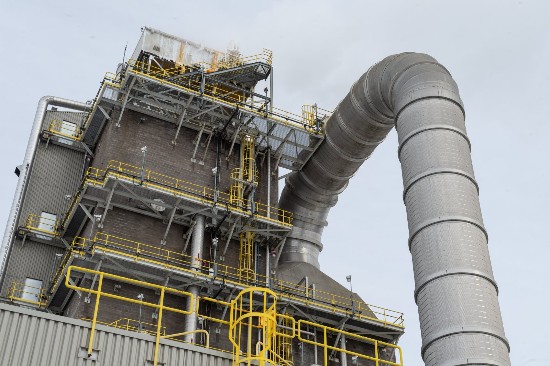The fossil fuel and energy utility companies are seeing in carbon capture and sequestration (CCS) a way to have their cake and eat it too. Is that why these industries are now lobbying governments to subsidize or pay in full for projects to remove CO2 and methane from the atmosphere?
The profit motive for capturing carbon emissions, the pollution that these companies have largely been responsible for, is now a market opportunity said to be worth as much as $800 billion US annually by 2030. Not bad when you can create a global environmental problem and then have others give you money to partake and profit from the solution. And it appears, governments, both national and local, are in an offering mood.
The alternative, of course, would be for these same governments to create a timetable for the closure of existing fossil fuel extraction and distribution operations, as well as the phasing out of polluting power generation facilities. But this is proving to be harder to do, particularly for those countries that rely on a big chunk of revenue coming from coal, oil, and natural gas royalties to help finance government programs.
In the latest move by the U.S. Congress, the federal government is showing that it is buying what the industry is selling, pouring money into projects to support carbon capture. The current amount coming from the latest infrastructure bill is $12 billion. What could $12 billion spent elsewhere buy? If invested in renewable energy projects, such as geothermal, wind, or solar, $12 billion would produce the equivalent of 250 Gigawatts of zero-emission electricity and equal half the cost of 500 Gigawatts of power being generated by coal-fired thermal power plants today.
Instead of building the added infrastructure to capture greenhouse gasses from coal-fired plants, and building and maintaining an infrastructure to pipe and pump the gas underground, the shutting down of coal-fired thermal energy plants and replacing them with zero-emission renewables (note geothermal has no intermittency challenges) would be a far more planet-friendly solution.
Breaking down those costs even further, look at an early commercial implementation of CCS. The SaskPower Boundary Dam in Saskatchewan, Canada, began operating in October 2014. This 824 Megawatt coal-fired plant was rated to capture 1 million tons of CO2 annually. It has yet to achieve that target which represented only a portion of the plant’s total carbon emissions. The cost to capture an optimal one million tons cost the Canadian federal and Saskatchewan provincial governments $1.5 billion CDN or approximately $1.17 billion US.
Now, look at that $12 billion the U.S. Congress is allocating for CCS projects in its latest infrastructure bill. What would that buy? 10 equivalent projects to the one being run by SaskPower, and optimal capture of 10 million tons of carbon emissions annually. Sounds like a lot of CO2, but it’s not.
Here’s a comparison number that will put CCS plans in perspective. Fossil fuel operations today, that is coal, oil and natural gas extraction and distribution, contribute 34.7 billion tons of CO2 to the atmosphere annually. That $12 billion investment Congress has authorized would address 0.02% of those emissions. But, spent on renewables, it would buy 250 Gigawatts of net-zero emission electricity.
The environmental movement sees CCS as a canard, and I am in agreement when one looks at the present cost of these projects and the paucity of emissions captured. The argument environmentalists present notes that money appropriated for capturing CO2 emissions from existing fossil fuel operations allows them to operate well into the future while not capturing nearly enough of the carbon emissions to make a difference. At the same time, these operations contribute additional toxic chemicals and waste harmful to the environment. Environmentalists, instead, see investing in renewable alternatives as a much better bet. They argue for a push to electrify every home, building, and business using net-zero emission sources. And they further state that what they propose would come in at a fraction of the cost of the money needed for CCS investments that have yet to prove their worth, while meeting the goals set out in the Paris Climate Agreement.
But one should never underestimate the lobbying power of the fossil fuel industry which has found in CCS another way to make money while continuing to operate as before. The outward appearance of being more environmentally aware masks an intent to prolong their carbon polluting business model. And when they put on their environmental hats, the projects they propose are no more than delaying tactics to prolong the industry indefinitely into the future.
Take for example ExxonMobil’s proposal in April to build a $100-billion CCS project aimed at capturing emissions from Houston, Texas heavy industry with storage under the seabed of the Gulf of Mexico. Of the $100 billion, how much is ExxonMobil’s contribution? A pittance. Instead, the company is soliciting money from the federal and Texas governments as well as from the City of Houston and industry partners. What does this ExxonMobil proposal buy-in annual captured emissions? Between 50 and 100 million tons of CO2 at best annually by 2030, or less than 1% of the industry’s annual contribution to global greenhouse gas emissions. Extrapolating further, if $100 billion captures 1% of global emissions, then a CCS global solution to capture all emissions would minimally cost $10 trillion and only work if we could find sufficient subsurface storage for the sequestered CO2.
A final note: energy utility companies looking to CCS to prolong coal and natural gas thermal power plants have a pretty poor track record so far. SaskPower in Canada continues to underperform. And in the U.S. the only operational CCS plant, the Petra Nova CCS project in Texas, capturing carbon emissions from a coal-fired power plant, has been mothballed. Petra Nova’s cost, $1 billion US with more than 10% of the money coming from the federal government. To make matters even worse, the emissions Petra Nova was to capture weren’t going to reduce atmospheric warming at all. That’s because the captured CO2 was being pumped into old fields for enhanced oil recovery, which of course when burned, would have just negated the CCS environmental benefit.
So readers. Is CCS worth it? Let me know what you think.















